See No Evil (1971)
Directed by: Richard Fleischer
Written by: Brian Clemens
Starring: Diane Grayson, Dorothy Alison, Mia Farrow, Robin Bailey
AKA BLIND TERROR
UK / USA
AVAILABLE ON BLU-RAY, DVD and DIGITAL
RUNNING TIME: 89 mins / 87 mins]
REVIEWED BY: Dr Lenera
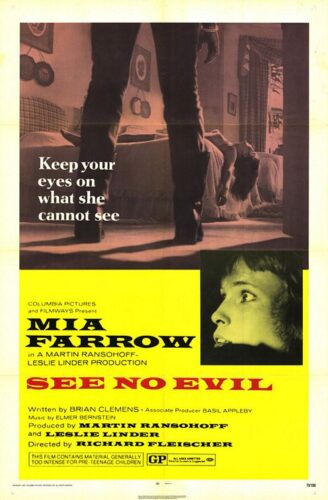
After being blinded in a horse racing accident, Sarah stays in the stately home of her uncle George Rexton and wife Dorothy and sister Sandy. She’s not too keen on reigniting things with her boyfriend, Steve, but it’s just as well that he persuades her to go riding with him, because in her absence somebody is let into the house whom Dorothy knows who kills everyone in it, including stable master Barker. And when Sarah returns and spends the night in the house, not only is she unaware that four corpses are strewn in various rooms but that the killer might still be there. But who could it be?
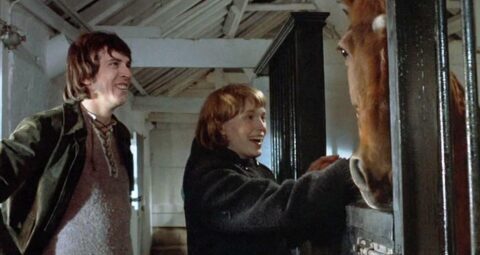
Having a heroine in a thriller or horror movie who’s blind is usually something which works, because, no matter how able, intelligent or tough she is, there’s always a vulnerability there which can heighten the terror and suspense. One of the best regarded films of this nature is 1967’s Wait Until Dark, starring Audrey Hepburn as the wife of a man who unknowingly brings home a doll full of heroin. Three crooks come looking for it and are prepared to use violence. The climax, which pits the stubborn blind lady against a cruel psychopath, is truly hair-raising stuff. See No Evil seems to be often regarded as similar, something of a knockoff, but it’s actually a rather different film, as well as being – in my opinion – a better one. In fact nearly half way through my first viewing I was becoming quite exhilarated at how good it was, at how well it was working as an edge of seat effort which brought in the really tense stuff early on rather than relegating it to the end. Richard Fleischer is one of those filmmakers who, because he didn’t have a recognisable style and made films in lots of different genres, isn’t much thought of by most critics, but the man behind Fantastic Voyage, Tora! Tora! Tora! and The Vikings always turned out quality work until the mid-70s where he ddin’t seem particularly bothered about the projects which came his way, and here he truly proves himself adept at wringing tension. A great deal of this almost minimalist film just consists of its heroine inside the great house which has bodies in it, but it never outstays its welcome and, even if the mystery element isn’t quite as intriguing as it could be, it’s not the focal point of attention. Mia Farrow is fantastic throughout and things only slip slightly in the final act which, considering the thrills that we’ve been subjected to before, seems over a bit too quickly.
Writer Brian Clemens wrote the script ‘on spec’ and Columbia Pictures told him, ‘Well, if Mia Farrow plays the lead, we’ll buy it,’ and she read it and liked it, so they bought it and shot it. Originally called Buff, it was shot at Binfield Manor in Warfield, and Wokingham. While a scene was being shot by the town hall, the Mayor of Wokingham was told to move along by the crew. He was invited to lunch on-set the next day. Someone not so fortunate was a photographer who was kicked by Farrow at the local train station. Actor Norman Eshley [Steve] recalls how cinematographer Gerry Fisher asked him to drive a car past him very close. Eshley, who’d only just passed his test, narrowly missed hitting Fisher by several inches and was very worried, but Fisher was totally unfazed and happy that he got the shot he wanted. Farrow’s then-husband Andre Previn wrote a musical score, but it was considered “too way out” by Columbia’s UK Studio Manager, ex-actor John Van Eyssen; the resulting dispute had Previn state that he’d always disliked the film. David Whitaker was hired to write a replacement score, but his work was also deemed unsatisfactory, so Elmer Bernstein came on board, and his score was allowed to remain. See No Evil was released as Blind Terror in the UK and other countries, with two minutes removed but also containing a few new shots. No scenes were cut and no dialogue removed, but there are editorial differences. For example, an early scene in a pub runs exactly the same but has more footage of the killer’s boots and his point of view in the Blind Terror version, while in See No Evil there’s more of people dancing, focusing on breasts and bums. Ah, the ’70s. Two suspense bits are shortened in Blind Terror, including a shot of a murdered body which is probably the most substantial cut, though said corpse is also shown again so you could say that its impact is heightened by appearing later.
Our first shot is of a cinema board showing The Convent Murders and Rapist Cult, both of whom are unfortunately not real. The camera pans down to people leaving and a shot of brown boots each with a white star on them; this is clearly already the killer watching them. A combination of further shots of the boots and POV shots ensures as he walks alongside some shops, all with violent subjects in their windows; toy guns, newspapers telling off a vicious prison riot, TVs showing somebody being bludgeoned to death in the film Torture Garden. He then enters a pub and surveys it, also buying a drink and having it before angrily sliding the glass along the bar so it falls off and smashes. Is he getting impatient at not having found someone / some people he wants to kill? Meanwhile Sarah has just come out of hospital and is going to be looked after at her uncle’s for a while. She accidentally knocks over a vase but doesn’t smash it and generally seems able to do stuff with sometimes a little bit of help. “What’s it like”? asks her sister Sandy with whom she’s sharing a room. “Bloody awful” is the response. Would some viewers today find issue with the depiction of Farrow’s character and her performance as a blind person? I wouldn’t think so, her mannerisms don’t seem exaggerated nor the script condescending, but then admittedly I’m baffled by a lot of today’s PC stuff so there probably are reviews which find issue with it. I like a moment where George is trying to miss out certain words and Sarah suggests to him that he not do so. We learn that she fell off a house which was then shot. “They had to because he broke a leg when we fell” says Sarah to Barker the stable master. “That’s what they say” is the ambiguous reply. When her boyfriend Steve shows her a new horse he’s bought for her, she has to go riding with him and has no problems. At the same time, Sandy has a fella round of her own, known only to Sarah. I love the simple story telling you often get in films of this kind. A lawn mower no longer in action tells us all we need to know.
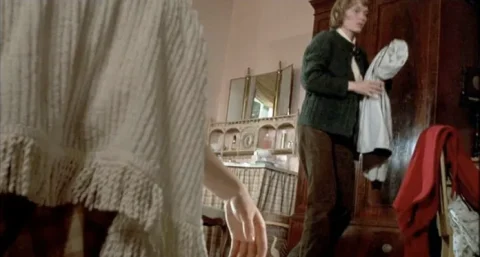
There’s a knock at the door of the mansion and Dorothy answers it. It’s clearly someone that she’s knows, but then most, if not all, of the other few suspects would probably be known to her too. The camera tends to show them from the waste up, while we only see the killer when we know it’s the killer from the legs down. There’s Barker, Frost who works for Steve, and Steven himself. There’s also a gypsy who hangs around where he perhaps shouldn’t, and later on the revelation of another one who really might be the killer. But – well, I’m not going to say. In any case, Sarah returns to the house and something very bad has clearly happened, while the killer doesn’t seem in any rush to kill her, unlike his other victims. At one point we see him lying comfortably on a bed while his rifle is underneath. Instead, he wants her to discover what’s gone on and be terrified out of her mind, though we never know why he chose these people to kill except for a hint of class envy. Sarah eventually gets out and her flight is truly nail-biting stuff, especially her scrambling in a muddy quarry. The close-ups were probably shot on a set, but Farrow really looks like she’s out there, getting down and dirty. This is really the true climax of the movie, even though we get another one at the end. The suspense is well built up, but then things are resolved rather fast, with a killer who’s defeated disappointingly quickly. However, the coda doesn’t contain a single bit of “wrap up” dialogue, which leaves matters on a fairly downbeat note even though the worst is now over. If this had been made just a decade later and had been a commercial success [which it wasn’t], we might well have seen a sequel [the 2006 film of the same name is nothing to do with it], and I wouldn’t have minded that, even though the decision not to show any of the murders here would no doubt not have been followed through.
The midsection is quite brilliant in its audience manipulation, and makes one wish that Fleischer, while he did make two very fine crime dramas based on real life murderers – The Boston Strangler and 10 Rillington Place – had made a full-on horror movie. When Sarah gets back to the mansion, we see an amulet lying on the drawing room carpet which somebody has clearly dropped, then smashed glass on the kitchen floor. She misses the amulet [though we know it will become important later] then narrowly misses stepping on the glass – which means that she just has to step on it when she re-enters the kitchen later. We cringe, just like we do when John McClane walks on the stuff, because we’ve all done it, we know what it feels like. After making her cup of tea, she sits in the drawing room drinking it, but the killer is also sitting in there, totally silent, in a real unsettling moment! She then lies on her bed listening to music, which turns into soundtrack music as we zoom into her face and it looks like we’re going to get a flashback to happier times, though we don’t, in a nice example of directorial misdirection. At night, the bedroom door slowly opens then quickly shuts. Sarah awakes in the morning to a house with briefly glimpsed bloody corpses in rooms and eventually takes a bath where one of said corpses lies – but the bathroom door is shut in our face, so we don’t see her reaction until after the event when she opens the door and staggers out in shock and fear. All throughout the camerawork has consisted of long, staring or gliding takes using wide lenses which sometimes slightly distort the frame, the ornate interiors becoming more and more familiar as we half-expect a ghost to appear. I often whinge about “shakycam” in modern films [though actually not as often as I used to, partly because I review less new films and the technique has been less used of late”] but there’s a good use of it here to donate Sarah’s panic. It’s fine in small doses when it’s used for a reason.
Less fine for some viewers today would be the treatment of gypsies. “Gyppos, don’t know why we allow them” says one character early on, setting the general tone. Later on, Steven presses his rifle against a gypsy’s neck and doesn’t apologise when it becomes clear that it wasn’t at all necessary for him to do this. I’m not going to get all PC and jump down Clemens’s throat, because for all we know he could have been criticising the prevalent attitude at the time. Neighbouring gypsies would have indeed been immediate suspects. In any case, I find more interesting the idea that the killer may have deliberately chosen privileged rich folk to kill, then had fun toying with a person who couldn’t see. Farrow seems to be understandably channeling her stunning performance in Rosemary’s Baby. Her face gets a lot of closeups so she has to work overtime to convey the right emotion properly. Eshley is interesting enough as the romantic lead to make one wonder why he didn’t go on to have a successful career in the movies and worked mostly in TV. He and Farrow have a nice chemistry. Bernstein’s score surprisingly sometimes seems to hit the wrong “note” [sorry]. His opening music has an odd western feel which is later repeated; there are some subtle suspense passages, but my overall feeling is that, despite Bernstein’s justifiable status as a “great”, any of the two unused scores may have been better. Still, See No Evil is often almost top notch stuff, winding the viewer up very skillfully, and is something I feel I can recommend to almost anyone. Perhaps the most astounding thing is that it never got an official video or DVD release anywhere until 2012! That’s quite something. I can’t seem to unearth why this was so. Its reputation would probably be much higher if it had.
Rating: 











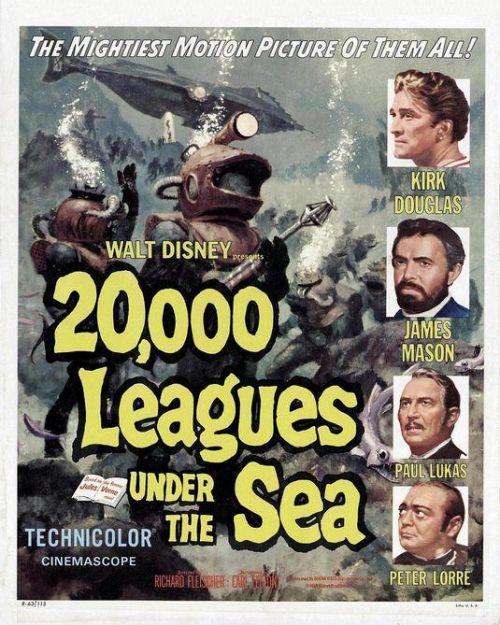
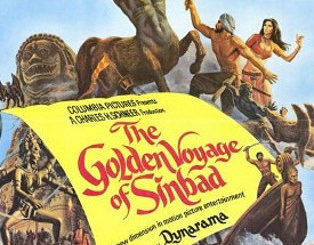
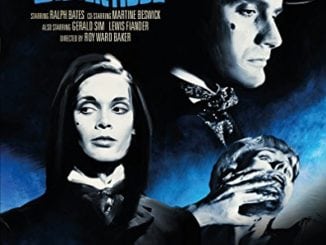
Did you miss the part where Farrow’s relatives in their shiny Mercedes splash a mud puddle onto the killer’s boots and then very annoyingly blast the car horn at him when he’s standing in the road in front of the car? Surely these incidents in the beginning of the film contribute as to why he targets the family first with the car vandalism and ultimately for his killing spree later.